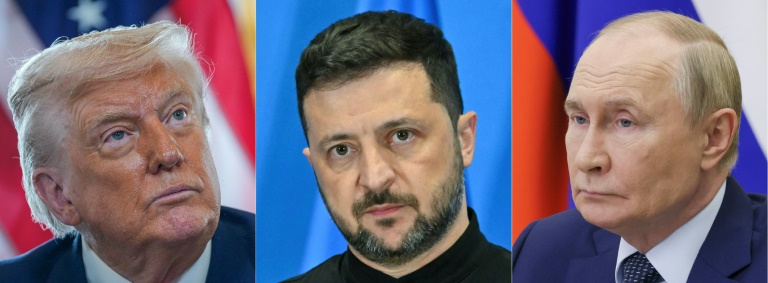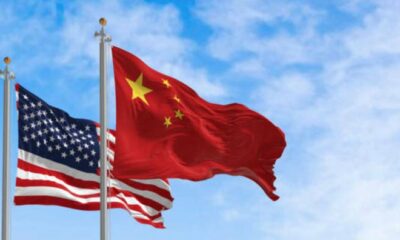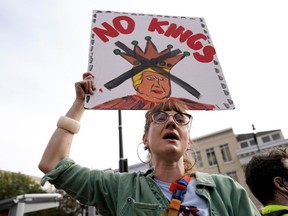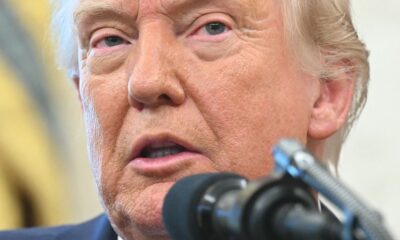World
High-Stakes Alaska Summit: Trump and Putin Face Off for Influence

US President Donald Trump and Russian President Vladimir Putin are set to engage in a high-stakes summit in Alaska on March 15, 2024. The meeting is expected to revolve around their competing interests in Ukraine, with Ukrainian President Volodymyr Zelensky observing from the sidelines. This summit marks a significant moment, as it will be Putin’s first visit to Western territory since the onset of the Ukraine conflict.
The primary objective for Trump appears to be the pursuit of the Nobel Peace Prize. Despite skepticism from many observers regarding the likelihood of receiving the prestigious award, Trump has openly expressed his desire for it. He has touted his negotiation skills, claiming he could resolve the Ukraine conflict in a mere 24 hours. However, his previous attempts to influence Zelensky, including pressuring him to make concessions and cutting US aid, have not yielded the anticipated results. Additionally, Trump has indicated potential business interests in Russia, despite ongoing Western sanctions due to the war.
Concerns among European leaders are mounting, as there is fear that Trump may be swayed by Putin during their one-on-one discussions. This concern is rooted in Trump’s past admiration for Putin, notably during a 2018 summit where he sided with the Russian leader over US intelligence assessments regarding election interference.
Putin’s agenda for the summit emphasizes retaining as much territory in Ukraine as possible. Following the initial failures of the February 2022 invasion, Russia has made incremental military gains, bolstering Putin’s belief in his strategic advantage. John Herbst, former US ambassador to Ukraine, noted that while Putin may have a vision for a ceasefire and security guarantees, it falls short of his ultimate goal of controlling all of Ukraine. “If he can’t get anything more, he may settle for what’s available,” Herbst explained, underscoring the precarious nature of the negotiations.
The potential for a ceasefire deal hinges on whether Russia can maintain control over escalating dynamics in the region without genuine deterrence. Sam Greene, director for democratic resilience at the Center for European Policy Analysis, stated that the best-case scenario for Russia would be to negotiate a ceasefire that does not significantly alter the current power dynamics.
Zelensky’s position is markedly different, as he seeks a direct role in negotiations and ultimately aims for the withdrawal of Russian forces from Ukraine. Unlike the previous administration under Joe Biden, which emphasized Ukrainian involvement in any discussions, Trump has suggested a potential three-way summit, contingent on Putin’s agreement. Nonetheless, Trump has reiterated that Ukraine may need to consider territorial concessions, a stance that Zelensky has firmly rejected. This has led to concerns among Ukrainians that their fate could be determined without their input.
For Ukraine, the most favorable outcome would involve no agreement between Trump and Putin, coupled with the imposition of further sanctions on Russia. Herbst noted that Zelensky might be amenable to a deal that acknowledges Russian control of its current holdings without formal recognition of its annexation efforts.
The choice of Alaska as a summit location carries historical significance, as the United States purchased the territory from Russia in 1867. This setting adds a layer of complexity, particularly in light of Putin’s status as a target of an arrest warrant from the International Criminal Court in The Hague. Although the United States is not a party to this court, the implications of the summit’s location are not lost on observers. Alaska serves as a symbolic backdrop amid claims of territorial sovereignty, particularly as Russia continues to question Ukraine’s borders established after the dissolution of the Soviet Union.
As the summit approaches, the world watches closely, aware that the outcomes could reshape the geopolitical landscape in Eastern Europe. With competing interests at play, the stakes could not be higher for all parties involved.
-

 World3 months ago
World3 months agoScientists Unearth Ancient Antarctic Ice to Unlock Climate Secrets
-

 Entertainment3 months ago
Entertainment3 months agoTrump and McCormick to Announce $70 Billion Energy Investments
-

 Science3 months ago
Science3 months agoFour Astronauts Return to Earth After International Space Station Mission
-

 Lifestyle3 months ago
Lifestyle3 months agoTransLink Launches Food Truck Program to Boost Revenue in Vancouver
-

 Technology2 months ago
Technology2 months agoApple Notes Enhances Functionality with Markdown Support in macOS 26
-

 Top Stories1 week ago
Top Stories1 week agoUrgent Update: Fatal Crash on Highway 99 Claims Life of Pitt Meadows Man
-

 Sports3 months ago
Sports3 months agoSearch Underway for Missing Hunter Amid Hokkaido Bear Emergency
-

 Politics2 months ago
Politics2 months agoUkrainian Tennis Star Elina Svitolina Faces Death Threats Online
-

 Technology3 months ago
Technology3 months agoFrosthaven Launches Early Access on July 31, 2025
-

 Politics3 months ago
Politics3 months agoCarney Engages First Nations Leaders at Development Law Summit
-

 Entertainment3 months ago
Entertainment3 months agoCalgary Theatre Troupe Revives Magic at Winnipeg Fringe Festival
-

 Politics1 week ago
Politics1 week agoShutdown Reflects Democratic Struggles Amid Economic Concerns





















